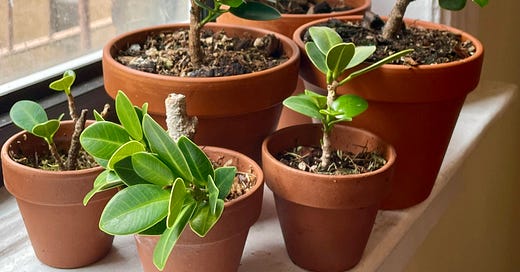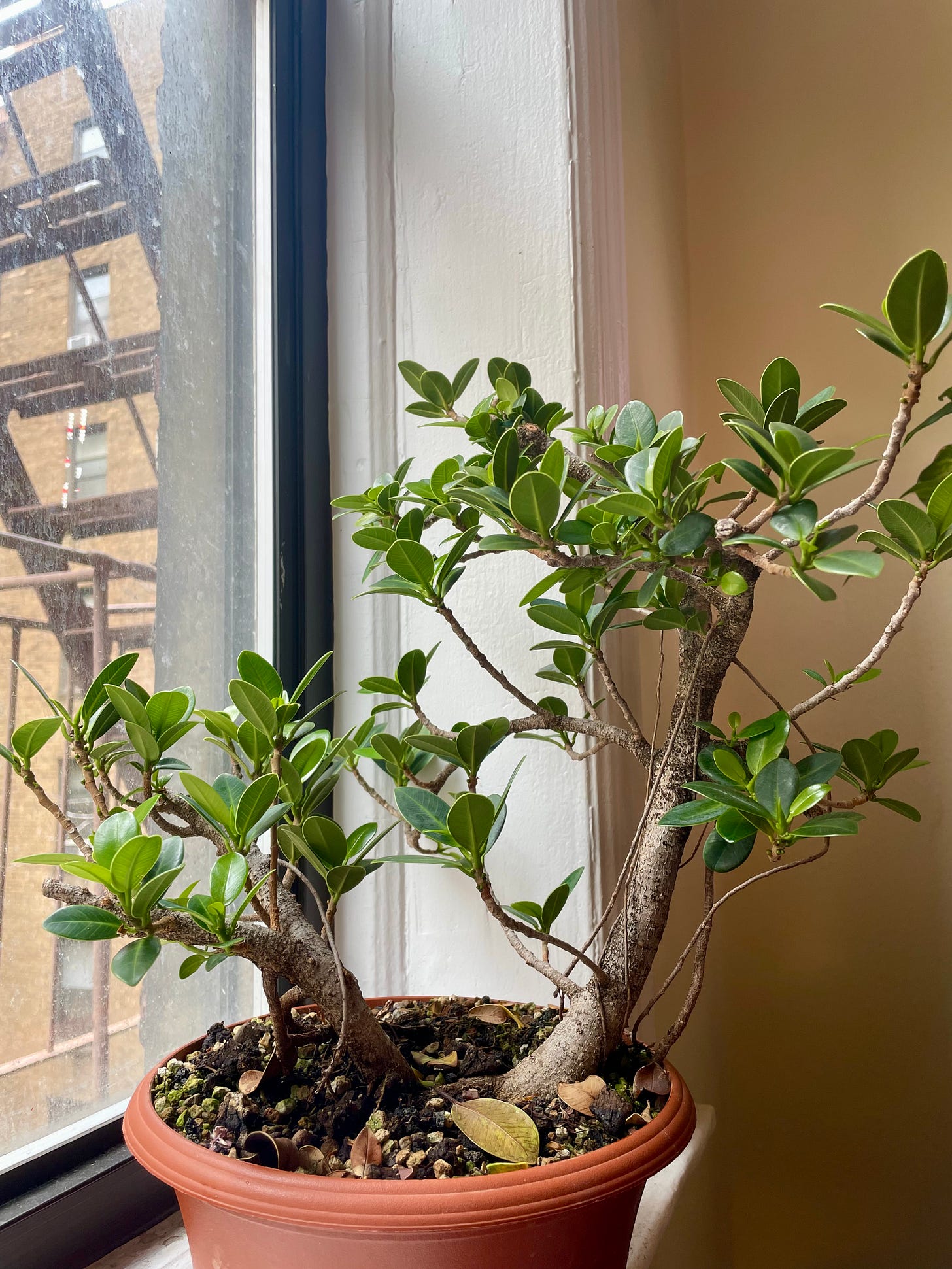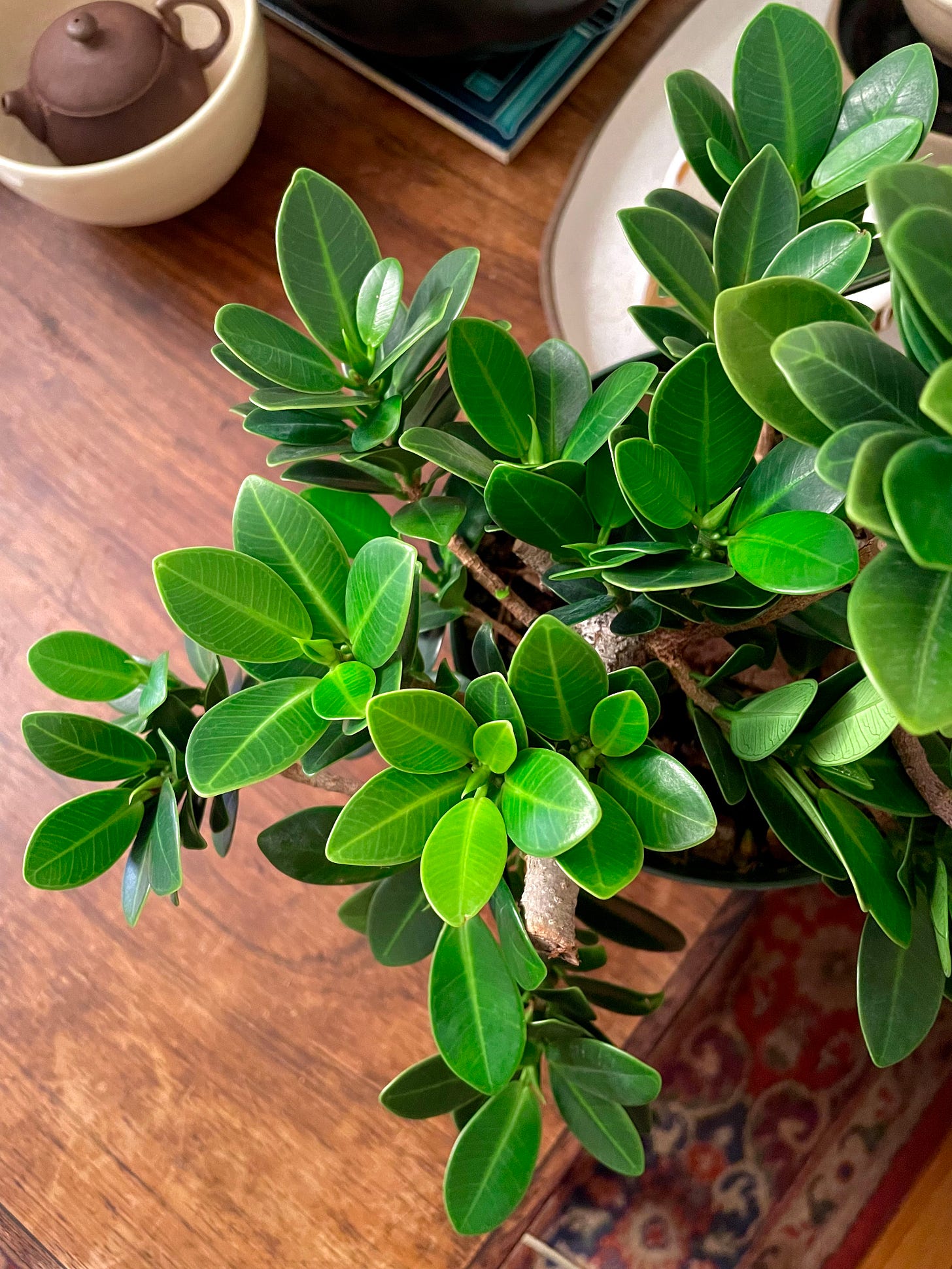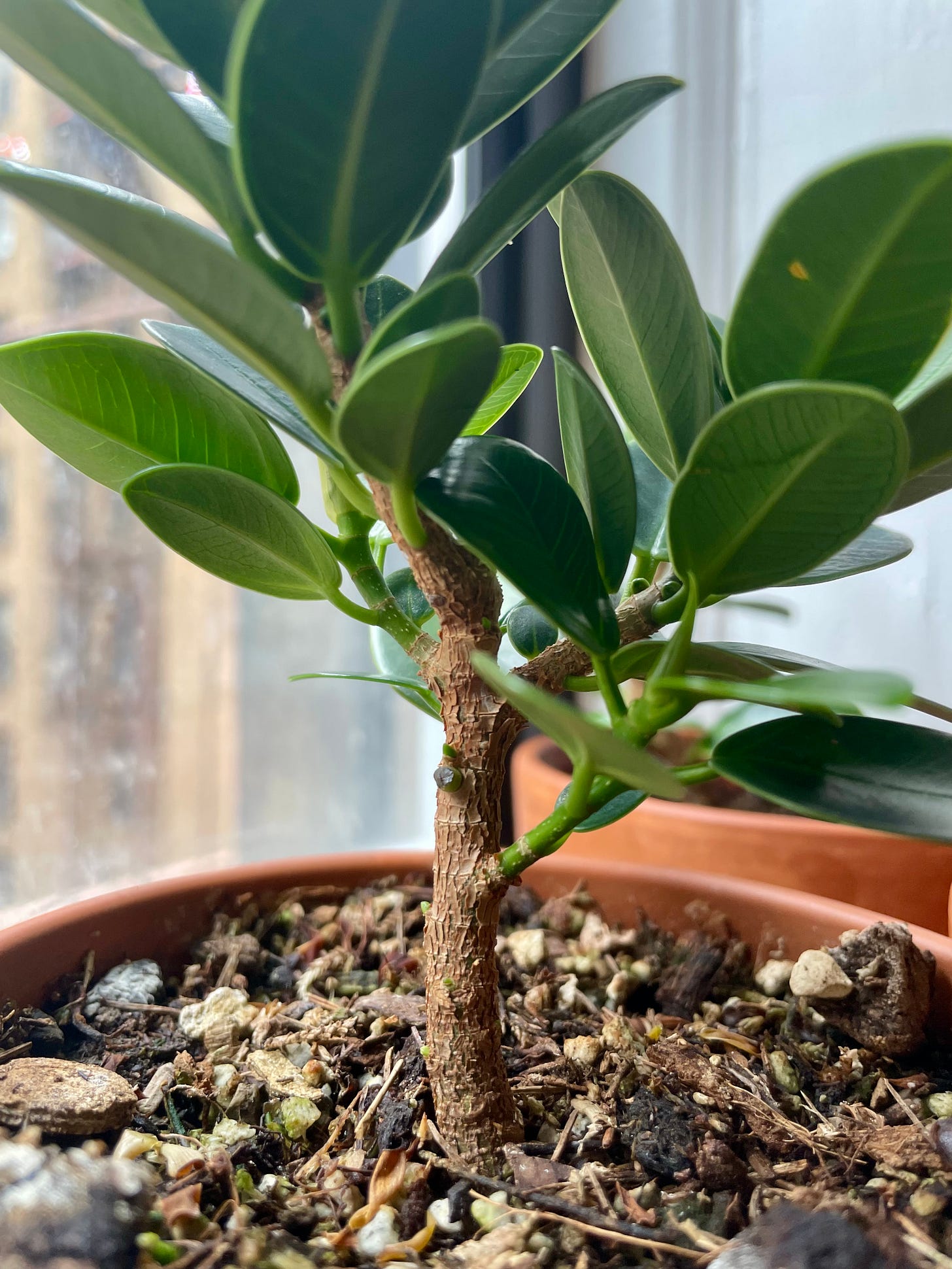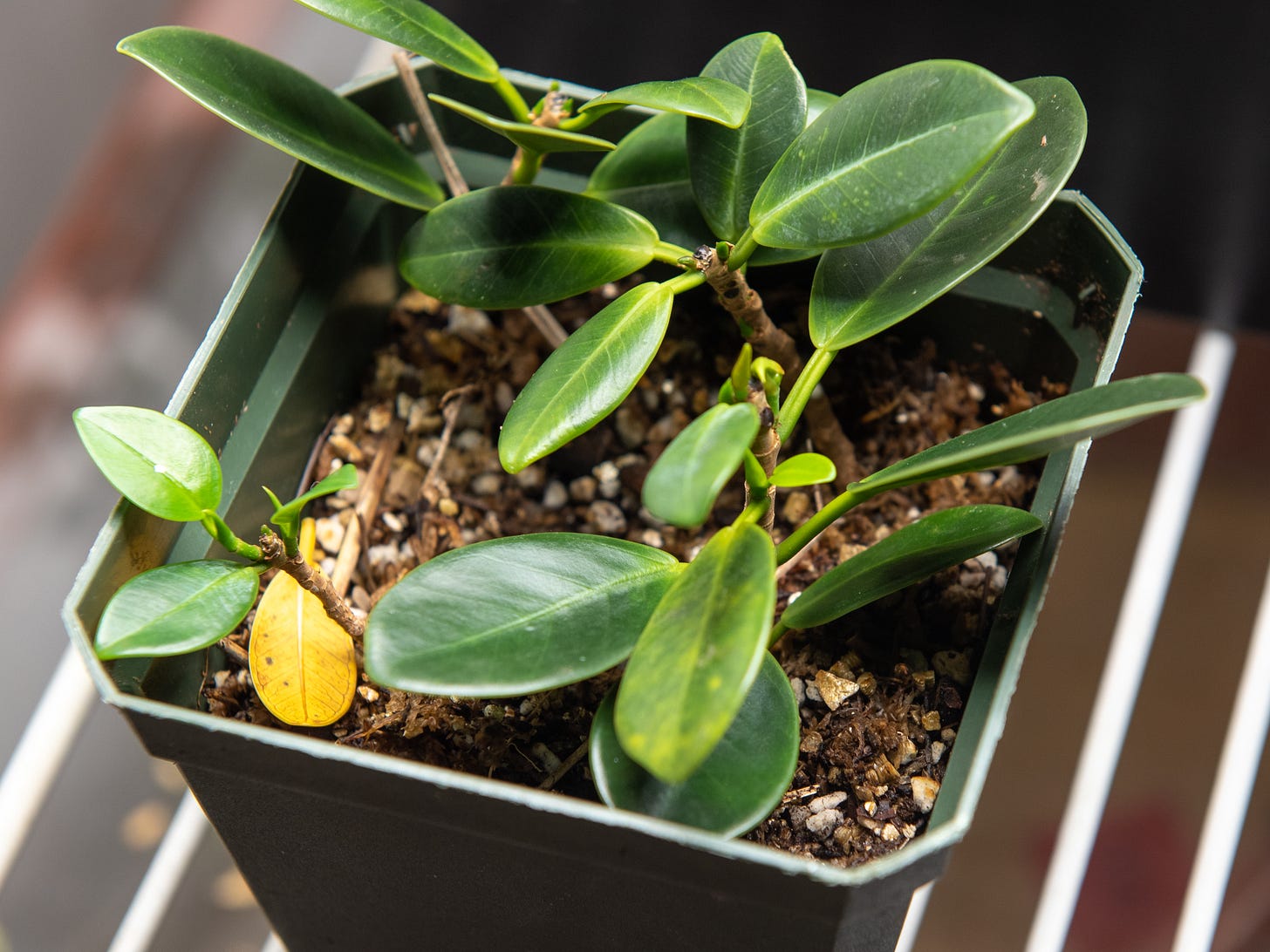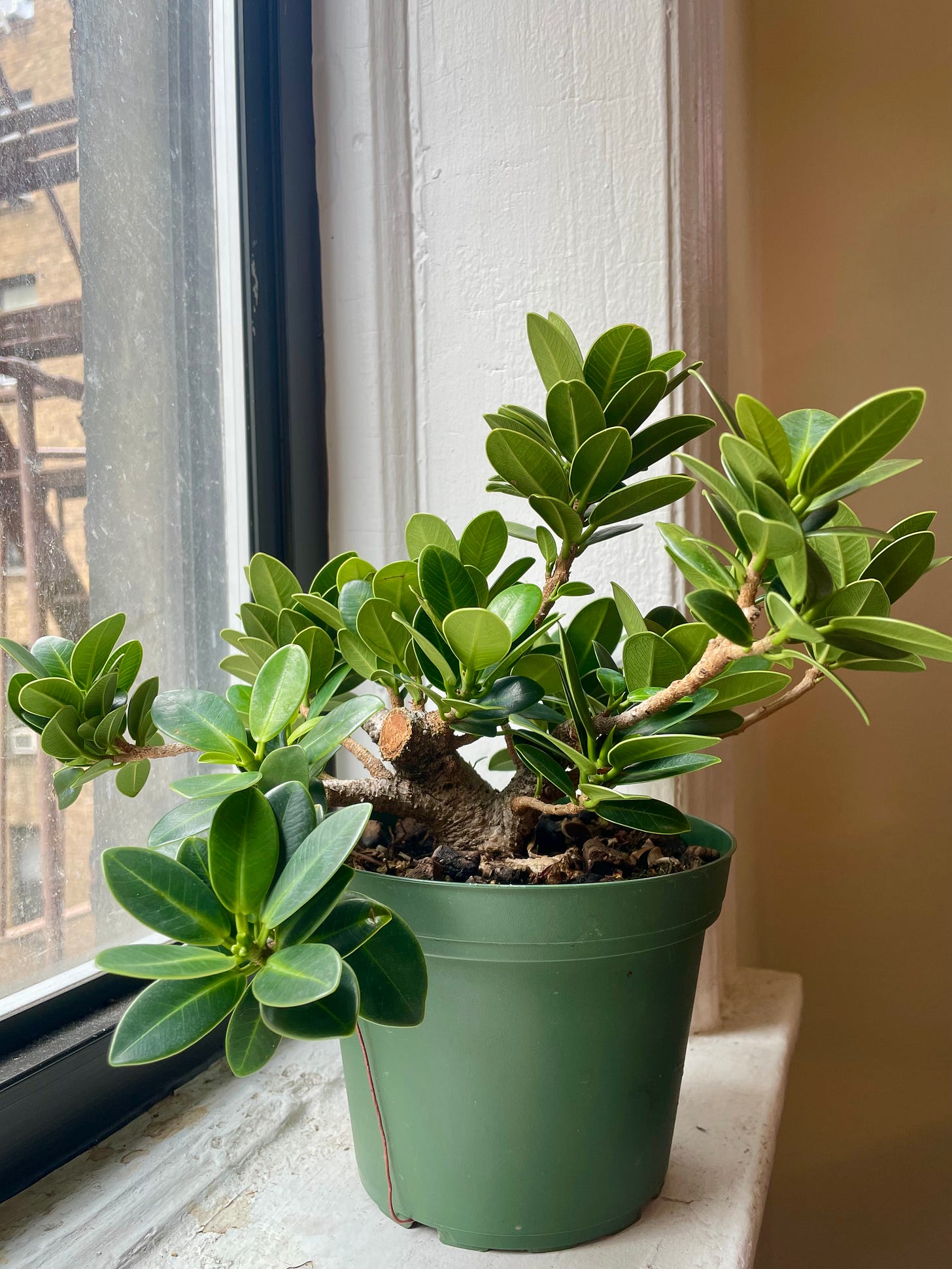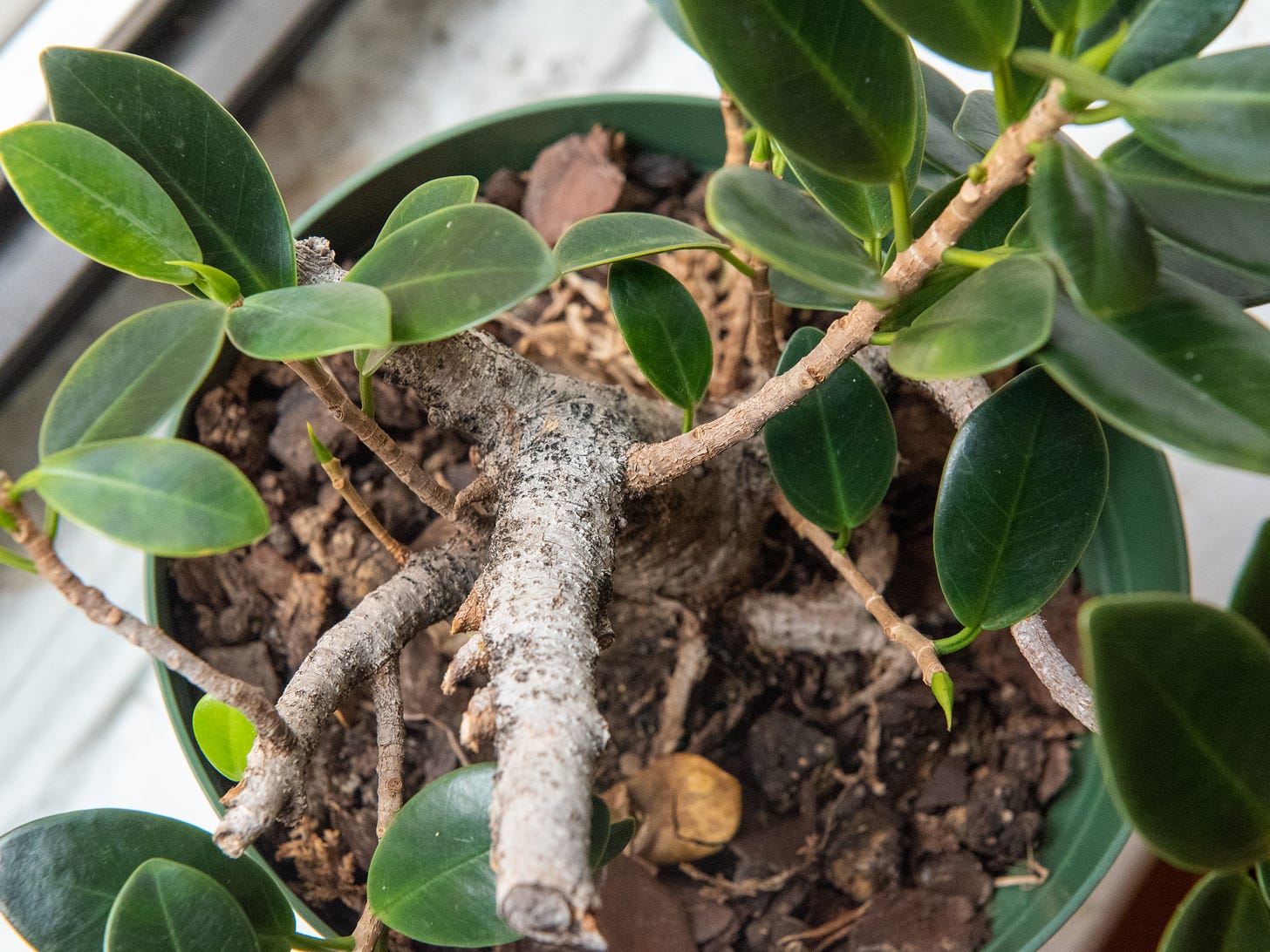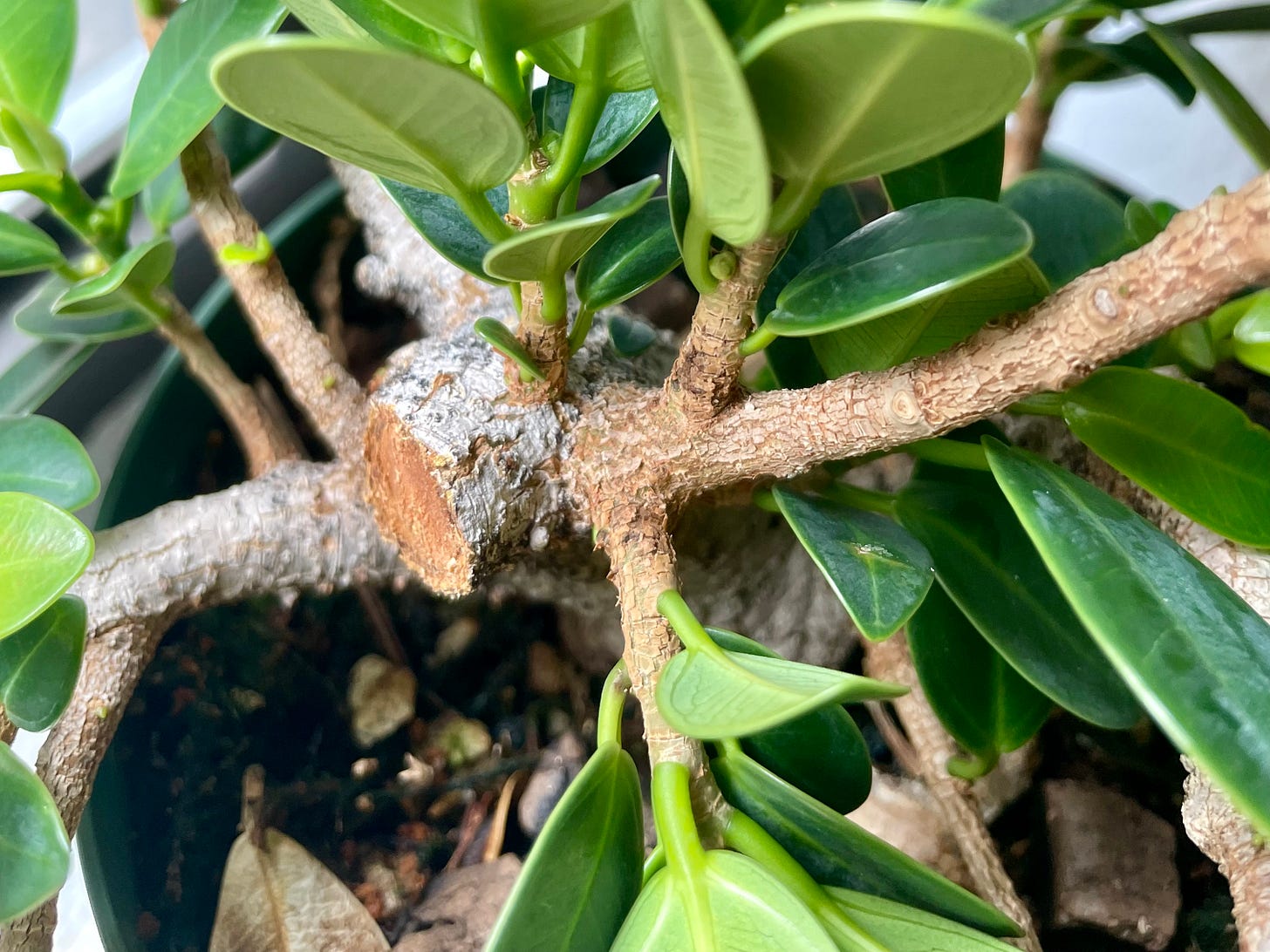I haven’t talked about my figs since this ficus report in January, so you’re due for an update. For one, both trees stopped dropping leaves…for the most part. Patience was only getting me so far, so I reached out to Andrea Wigert, the owner of the bonsai nursery where I bought my figs, and asked for her opinion. She diagnosed the problem right away. I was wrong in January; I was underwatering them.
I changed my watering habits, making sure to soak the pot for 15 minutes to fully saturate the inner root ball, and the trees recovered. I’ve since transplanted them to a rocky bonsai soil mixed with sphagnum moss. Now I have a better sense of what fig soil “should” feel like. And months later, the growth is encouraging.
Also a little scary. The figs are multiplying.
It turns out fig cuttings can root in practically anything, and like a native ecosystem stressed by invasive species, I too am overwhelmed with pots of ficus microcarpa.
Every time I prune I end up with more cuttings. It would be a shame to waste them, I reason at the time, so I dig up whatever soil components I have handy and place the cuttings in pots. The cuttings invariably root, so I have to take care of them, and eventually they require trimming, yielding even more cuttings.
I have three generations of ficus in this household; four if you count my two mother trees, as I’m pretty sure they are rooted cuttings as well. Ficus microcarpa is a popular species for commercial bonsai growers. I wonder how many generations back my mother trees would have to look to know when they were last planted in the ground.
The figs are edging out the other tropical trees on my kitchen table for space. With my compliance, they have successfully replicated their invasive habit in my indoor container garden.
So I have all these cuttings and I have plans. There are noodle-thin ones I’m preparing to graft back onto their mother tree, both to increase the root flare on the trunk and to create a fake aerial root off a branch. In essence, plant plastic surgery.
A few cuttings already look like the beginnings of miniature trees. This one is my favorite. Look at all that bud growth up and down the trunk! Here’s what it looked like in January.
My current plan is to develop these prototrees individually before planting them together in a group display. I want to experiment with the figs’ brawny roots by wrapping them around some object, like a rock. I’ve been rummaging through my curio for crystals and seashells that are up to the job.
However I will still have leftover cuttings. This is fine, if I can free up space. Many growers make a cottage business of this, selling trimming trash for buyers to root themselves. I don’t think that’s the move for me. I believe the best plant is one that someone gives you as a gift.
So…does anyone want a free potted ficus? Are you willing to come to Jackson Heights to get it? They can survive in most home environments and don’t require much care, once you get a sense of how to water them. Two summers ago I sold quarts of homemade ice cream from my door. Maybe this summer I can give away fig trees.
This tree has really thrived. Here’s how it looked in January after I pruned its apical branches.
And this week.
When I last wrote about the ficus, I mentioned how growing them made me practice patience as a skill. The next stage of my ficus growth will require something else. Gumshoe curiosity, I think, to find answers when there are no obvious sources of information. And I’ll need to consult the bonsai community more actively, which by internet etiquette means learning to become a respectful member of those online communities.
Good goals to focus on, and my ficus should be good partners. You can see how fast they grow and recover from injury.
Figs are down for anything. Please come take some.
Tree reading
If you’re interested in growing trees indoors, this article by Jerry Meislik is your starting point. Meislik has written two books on ficus bonsai, and is now selling a portion of his collection through Wigert’s. I recommend a look even if you have no intention to buy; he does beautiful work and has made important contributions to bonsai culture. [Bonsai Hunk]
A detective story unearthing the link between two botanical gardens. [Bulletin of Remarkable Trees]

